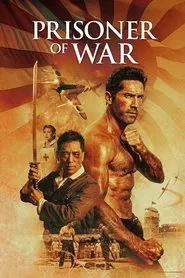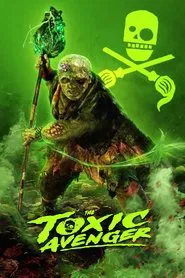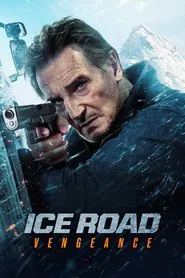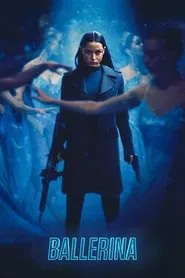
Prisoner of War
Genre: Action, War, Thriller, History
Country: United States
Director: Louis Mandylor
Cast: : Scott Adkins, Peter Shinkoda, Michael Copon, Donald Cerrone, Michael Rene Walton, Gary Cairns, Shane Kosugi, Masanori Mimoto, Gabbi Garcia, Sol Eugenio
Prisoner of War is a gripping cinematic odyssey that delves into the moral, psychological, and physical toll of captivity. The film blends tense realism with powerful storytelling.
It goes beyond typical war dramas by focusing less on the spectacle of battle and more on the inner struggles of its characters. With care and emotional insight, it explores resilience and our ability to endure.
From the start, the film creates a feeling of tight dread and constant uncertainty. The camera lingers on faces, not explosions; silence becomes as potent as gunfire.
Every frame feels deliberate, its austerity reflecting the stripped-down lives of those imprisoned. The story is not just about physical imprisonment but about the shackles of memory, guilt, and identity that bind each captive. In this sense, Prisoner of War is both a war film and a philosophical meditation on survival.
Plot & Narrative Structure
The film tells its story in a nonlinear way. It moves between the present-day captivity of soldiers and their memories from before they were captured. This structure reflects the confused minds of its protagonists. They are trapped not just behind bars, but also in their broken memories.
The film’s skillful pacing pulls viewers into a tense world. It reflects the uncertainty of captivity, where time feels strange, hope is fragile, and every hint of escape might be a trap.
As the plot develops, a central mystery emerges: one of the prisoners may be an informant. This revelation fractures the group’s fragile unity, turning camaraderie into suspicion. The story grows not with big battles but through quiet accusations, hidden alliances, and risky moves for survival.
When the escape attempt finally happens, it isn’t a moment of freedom. Instead, it’s filled with tragic uncertainty. It raises deep questions about what freedom really means when trauma still holds the mind captive.
Performances & Characters
The cast gives amazing performances. Each actor shows the deep emotional strain of captivity with real authenticity. The lead, a former idealistic officer now a weary survivor, drives the story with a quiet, powerful intensity.
His journey from defiance to despair, and finally to complex acceptance, is the film’s emotional core. His subtle gestures and wordless expressions often convey more than any line of dialogue could.
Supporting performances enrich the film’s emotional landscape. A medic, haunted by failed rescues, a young recruit with naïve hope, and a tough veteran hiding deep loss all show humanity in tough times.
Their interactions show deep empathy and sudden bursts of anger. This turns Prisoner of War from just a survival story into a powerful study of moral strength. The chemistry among the cast turns the tight space into a mix of strong feelings. Here, loyalty, betrayal, and compassion clash.
Action & Dance
Prisoner of War takes a different path from typical war films. It uses movement, rhythm, and choreography to express psychological struggle, not constant fighting.
Every act of violence is carefully crafted. It often happens in tight spaces where tension is clear, and the camera stays focused. This close choreography turns fights and escapes into haunting movements. It’s like tragic dances happening inside a cage.
Even in moments of stillness, there’s a dance-like precision to the blocking and body language. The prisoners line up for rations, dig tunnels, and share coded glances. This creates a daily rhythm that feels repetitive.
This pattern shows both their discipline and desperation. The director uses these movements not just for realism but as an artistic tool. They show how the human body is both a means of resistance and a source of suffering against dehumanisation.
Style & Technical Craft
Visually, Prisoner of War is a triumph of subdued artistry. The cinematography uses muted colours like ashen grays, cold blues, and dim ambers. These tones show the emotional emptiness of captivity.
Natural light streams through cracks and barred windows, casting broken shadows on the prisoners’ faces. Using handheld camera work puts viewers right in the middle of confinement. Every breath and whisper feels close and urgent.
The sound design is equally meticulous. Silence dominates large portions of the film, punctuated by distant echoes or the clanging of metal. When the score appears, it does so subtly. The strings and percussion create tension without losing the realism.
Editing is precise, with cuts that linger just long enough to create discomfort. The technical skill shows a filmmaker fully in control of tone, mood, and atmosphere. Want to add film full of mystery? HIM movie should be in your list.
Themes & Franchise Integration
Beneath its surface narrative, Prisoner of War explores enduring themes of loyalty, morality, and the cost of survival. It asks how much people can endure before they lose their humanity. It also explores if redemption is still possible after betrayal.
The psychological side of captivity acts as a metaphor for feeling trapped in life. Here, freedom is just as much about the mind as it is about the body.
If part of a larger franchise or cinematic universe, Prisoner of War serves as both a continuation and an evolution. It deepens the themes from earlier entries. Instead of focusing on external battles, it turns inward. It looks at the invisible scars that remain.
This reflection adds emotional depth to the series. It shows that the real impact of war isn’t about winning or losing. Instead, it’s the lasting trauma felt by survivors.
Reception & Mixed Critique
Critics have lauded Prisoner of War for its uncompromising realism and psychological intensity. Many praised its slow pace and attention to character instead of spectacle. They noted its refusal to romanticise war or simplify the human experience.
The film’s simple visuals and haunting score received high praise. Many reviewers called it a “masterclass in minimalist storytelling.””
However, not all responses were universally glowing. Some viewers found the slow-burn story and little action off-putting. They called it emotionally heavy and hard to follow.
Others argued that its ambiguous ending left too much unresolved. Even critics praised the film’s ambition and artistry. They saw it as a bold statement in the war genre, one that values truth over entertainment.
Strengths
The film’s greatest strength lies in its emotional authenticity. Every decisionfrom casting to cinematographyserves the story’s psychological depth. The performances are rich, the writing is careful, and the direction shows a deep grasp of human suffering. This cohesiveness makes for an immersive experience that lingers long after the credits.
Additionally, the restrained use of action and score amplifies the film’s realism. The absence of melodrama allows the quieter moments to speak volumes.
It is a film that demands patience but rewards it with meaning. In its best moments, Prisoner of War achieves a rare equilibrium between cinematic craft and moral contemplation. If you love watching movie full of horror then you must add The Conjuring: Last Rites at putlocker.
Weaknesses
While the film’s meditative approach is powerful, it may not appeal to all audiences. The pacing may seem slow, especially for viewers hoping for more typical action scenes. Some subplots, like the hinted romance and the commanding officer’s backstory, feel underdeveloped. This leaves emotional threads hanging.
Sometimes, the film’s symbolism feels heavy-handed. It often overuses motifs of light and confinement. Its commitment to ambiguity, while intellectually rewarding, risks alienating those seeking narrative closure. Even with these flaws, its shortcomings arise from ambition, not oversight. It’s a sincere effort to create something meaningful and lasting.
Final Verdict
Prisoner of War stands as a remarkable exploration of endurance and identity under duress. It is not a film for casual viewing but for contemplation. Its slow rhythm, moral complexity, and emotional precision make it a work of uncommon sincerity. Viewers who embrace its subtleties will enjoy a deep cinematic experience that stays with them like a haunting echo.
In war cinema, where spectacle often overshadows meaning, Prisoner of War stands out. It shows restraint and thoughtfulness. The film challenges viewers to face the psychological cost of survival. It asks not just who escapes, but who stays whole after doing so.
Rating
Putlockers gives rating 9/10 to this movie. A harrowing, beautifully crafted meditation on captivity and courage. Not flawless, but unforgettable.






